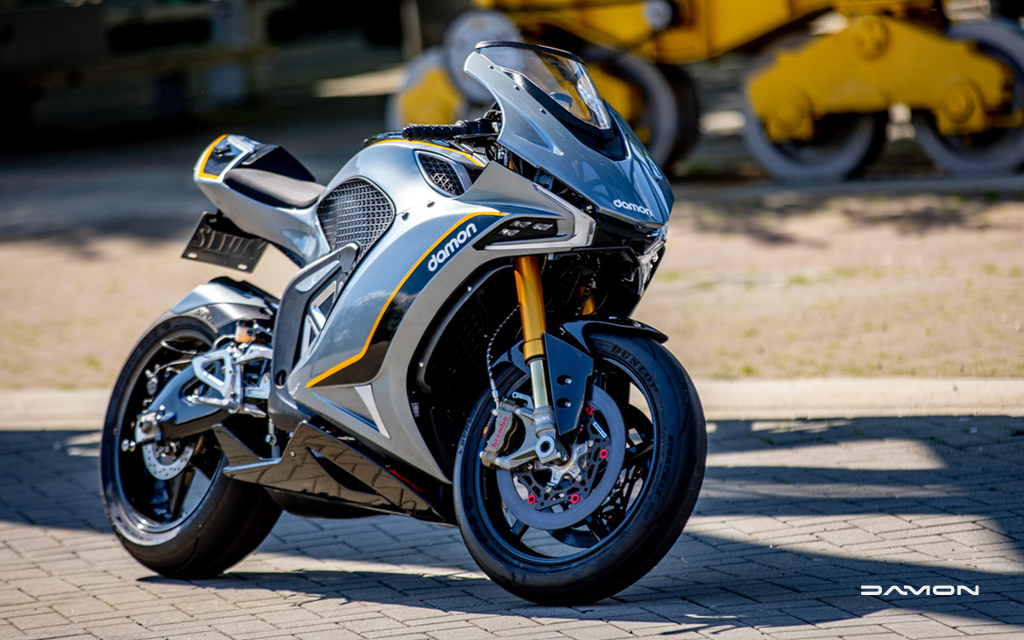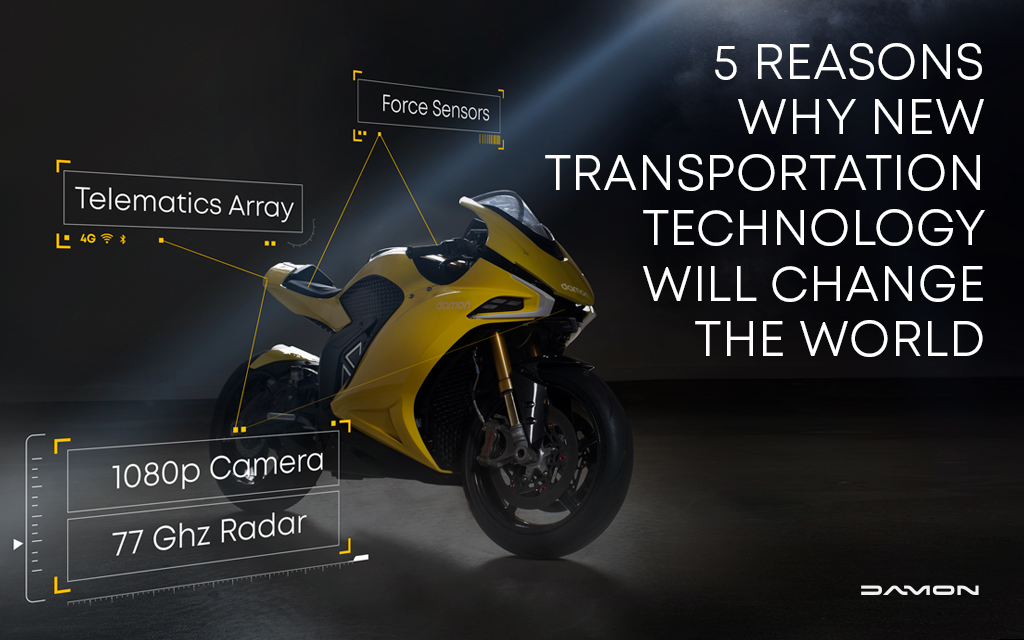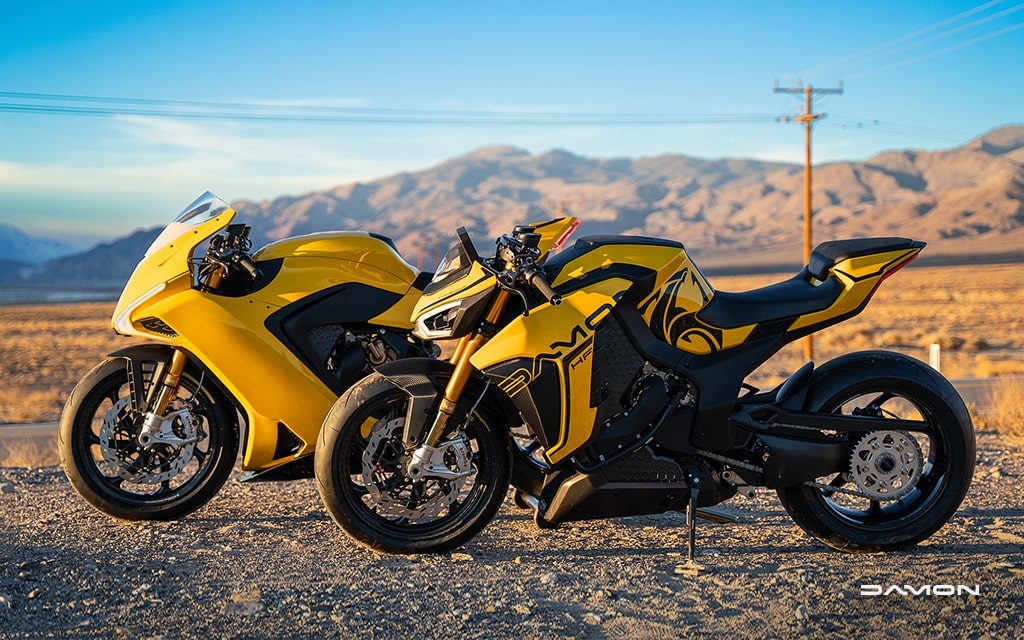5 Reasons Why New Transportation Technology Will Change the World
We may not entirely be at the flux capacitor stage of travel yet, but transportation technology is due for a massive change.
AI and big data have already shaped our lives in ways we previously thought were unimaginable. However, when it comes to AI’s influence on motorcycles, we’ve barely scratched the surface.
So what does this mean for the future of motorcycling? Gearheads may be scratching their heads and wondering why you’d want to mess with motorcycles and whether this new transportation technology has a place in riding culture.
While it may not seem like it to some old-school riders, electric motorcycle companies’ increasing use of AI and big data will not only improve riding but will also change the world’s transportation ecosystem for the better. How? Let’s find out!
AI and Big Data Will Make Roads Much Safer
The auto industry has already invested vast amounts of time and money into advanced driver-assistance systems (ADAS).
Although it’s a little early to see the long-term impact from cars with ADAS on the roads, the market will only continue to grow. According to a recent survey, the ADAS market is predicted to undergo a compound annual growth rate (CAGR) of 21.4% from 2019 to 2026. The challenge is getting all methods of transportation to invest in their own driver-assistance systems. This isn’t easy – especially with the difficulties in making an Advanced Warning System for Motorcycles (AWSM™).
However, here at Damon, we’ve committed to breaking the mold with our award-winning Advanced Warning System, CoPilot™. This 360º protection system incorporates advanced camera vision, object detection, and processor segmentation. But, where does AI and big data come into play?
Our AWSM™ is connected to an AI engine that sends every warning or possible danger to the Damon cloud, which in turn, is always learning and improving its assessment of potential risks on the roads. If other ADAS’ begin to use AI and big data the same way as Damon’s AWSM™ does, the number of accidents on the roads will fall drastically.

New Transportation Technology Means More Personalization
Transportation technology is increasing vehicle personalization. This is especially true when it comes to electric motorcycles.
ICE motorcycles are typically a uniform build. And while this is still the case for some electric motorcycles, a few bike brands are now switching gears. By using AI and big data, bikes are able to offer personalized riding experiences, unique to each individual.
Damon has tackled this through Shift™, our adjustable ergonomics technology. Shift™ allows riders to adjust both their footpegs and handlebars while in motion – all at a push of a button. This works in tandem with Damon’s cloud data collection and unlimited capacity to update and learn your riding habits and style. As a result, every time you go for a ride or elect to use Shift™, AI and big data are learning and adjusting to you as a rider. This makes your motorcycle safer and smarter.
This is just one of the ways that new transportation technology has the capability to tailor vehicles to its owners.
As you can see, new transportation technology has the capability to tailor vehicles to each one of its owners.
See Damon’s SHIFT™ in action here
Bikes Will Evolve Alongside You as a Rider
Motorcycles of the future will allow you to easily switch bikes as you evolve as a rider or as your skillset changes.
Right now, it’s likely you’ll buy or upgrade your electric motorcycle as you move up or down in riding capabilities or desires. For example, after you’ve racked up 2,000+ miles on a lower-performing motorcycle, you may want a two-wheeler with a bit more meat on the bone or want to go on some longer journeys. Having to upgrade every time you develop as a rider can become expensive.
However, some bike brands are building motorcycles where their existing hardware can be traded in – in the same way one might upgrade a cell phone!
Take Damon’s HyperDrive™ as an example. This multi-variant powertrain platform is an industry first. It’s a liquid-cooled and thermally-managed, high-energy pack that allows for a multitude of battery capacities. But what does this mean for you? Well, as the HyperDrive™ is found in all HyperSport models, you’ll be able to pay a subscription for your motorcycle with the option to upgrade through the HyperSport family as your riding needs change.
Damon’s revolutionary subscription model is a clear signpost of the ways electric motorcycles will evolve alongside you in the future.
New Transportation Technology Means Less Pollution
All around the world, nations have been under significant pressure to reduce emission levels and tackle climate change. And while the COVID-19 pandemic resulted in a record-breaking fall in CO2 emissions, experts say this won’t have a long-term impact when the world returns to a sense of normality. So, what can be done to ensure sustainable change?
To truly tackle climate change, there needs to be a shift to electric vehicles. Even with the advances in engine management control systems, the switch to electric-powered vehicles is inevitable.

The world is ramping up for this change. There are now a number of tax credits – including an electric motorcycle tax credit – to encourage the purchase of EV vehicles. Moreover, the EV charging infrastructure has become way more commonplace in the last ten years.
Environmentally-conscious motorcycle manufacturers are using the latest transportation technology, AI, and big data to improve their specs. As a result, the preconception of electric motorcycles being weighed down by their battery and offering too little range is banished.
Available financial incentives, an increased number of EV chargers, and better-performing electric vehicles will be the eventual nail in the coffin for ICE vehicles. This will result in less pollution and help the fight against climate change.
Less Congestion as the West Shifts from Four Wheels to Two
For some, a world without congestion seems like a fantasy. We get it. Anyone who’s ever been gridlocked in all ten lanes of traffic during LA’s rush hour certainly gets it.
So, what’s the solution? Building new roads and infrastructure is notoriously difficult and it’s unrealistic to expect commuters to permanently switch too often unreliable forms of public transport.
Here at Damon, we believe that the more bike brands invest in new transportation technology, the safer and more widely-accepted riding will become. As a result, motorcycles and other, smaller forms of mobility may become the primary vehicles on the road.

Anyone who’s been surrounded by New York’s endless sprawl of cars probably thinks this is nonsense. However, in a lot of Southeast Asian countries, over 80% of households own a motorbike so it’s not unheard of. In terms of congestion, a long-term transition towards riding would significantly reduce commuter gridlock.
This is already being recognized by some countries and states, with motorcycles being given licenses to safely lane filter to the front. Not only does this tackle congestion, but it also reduces rear-end collisions and other accidents. Moreover, motorcycling is more enjoyable and helps reduce stress – something that can’t be said of driving during rush hour.
This change won’t happen overnight. However, AI and big data’s long-term impact on the transportation ecosystem may be the western world shifting from four wheels to two.
Smart Cities Becoming a Reality Due to AI in Transportation
Smart cities are no longer a buzz term bandied around Silicon Valley. The IoT (internet of things) revolution is making machines and vehicles interact more easily than ever before. As a result, cities are becoming smarter day by day.
Smart transportation and mobility are some of the essential ingredients needed for a smart city, alongside:
- Smart buildings
- Utilities
- Environment
- Infrastructure
- Public engagement and security
When it comes to smart transportation, electric and autonomous vehicles are often cited as the way the wind is blowing. TESLA is claiming they will have a level 5 autonomous car by the end of 2020. That being said, it’s unclear when it will be safe and legal for these to be on the road.
However, due to the emergence of AI in transportation, this may be sooner rather than later. Autonomous vehicles will be able to communicate with other electric cars and motorcycles that use AI and Big Data. Therefore, the more drivers and riders who begin to invest in EV transportation that uses AI to interact with its surroundings, the sooner smart cities and autonomous vehicles will come to the fore.

Transportation Technology: The Future Looks Bright
As you can see, the emergence of new transportation technology, AI, and big data could have a significant impact on the transportation ecosystem.
Safer roads, vehicle personalization, and dramatically decreasing congestion and pollution due to the emergence of electric motorcycles are just some of the ways in which technology will change transportation forever.
The transportation technology revolution is coming. If you want a head start, get the motorcycle of the future today.





